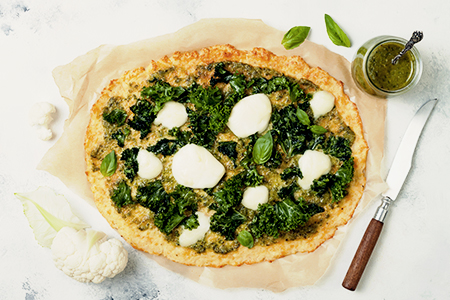Trends
Capitalising on the Italian themed menu
Border closures have led to supply shortages and a lessening of imported product Chefs and restaurateurs have turned to local producers: good for the economy and our industry The move has raised awareness generally of the quality of Australia’s food The next step is to look to suppliers in your own state or drill down even further to go ‘hyperlocal’ – focusing on your own suburb

KEY INSIGHTS
- Italian cuisine is the world’s most well-liked
- It’s an example of the Mediterranean diet which emphasises olive oil, fruits, vegetables and legumes, seafood and moderate use of dairy
- Regional variation in Italian food has created a wide range of meals with which you can expand your menu
- Risotto, alla pizzaiola dishes, ocean sourced fish, legumes and desserts are all examples of Italian meal types which can complement your pizza and pasta offering
While pizza and pasta are among its most popular dishes, Italian cuisine embraces far more than just those – which means there’s plenty of opportunity to expand your Italian-themed menu.
One of the oldest cuisine styles in Europe, Italian food exemplifies the ‘Mediterranean diet’, emphasising olive oil, fruits, vegetables and legumes, seafood and moderate use of cheese and yoghurt.
Natural geographic barriers led to widespread regional variations in Italian food and this means the cuisine encompasses a vast range of ingredients, cooking methods and presentation styles which you can capitalise upon. Even today visitors to Italy will find that regional centres such as Tuscany, Venice and Bologna serve their own distinctive food styles and signature dishes.
Risotto makes an ideal complement to your menu if you’re already serving pizza and pasta. Traditional Italian risotto is cooked in a sofritto of onion and butter or olive oil, with white wine then added, and richly flavoured through fresh herbs such as basil, thyme, sage and oregano. Rice can also be used as a stuffing for vegetables and a garnish for seafood.
Alla pizzaiola dishes are commonplace in Italy and feature sautéed beef or veal simmered with garlic, tomato or herbs. Saltimbocca has become a widely known veal recipe and increasingly prominent on menus, but there are many other varieties to choose from – such as involtini (rolled veal stuffed with ham) and veal loin cooked “en papillote” with artichokes.
Ocean-sourced fish as opposed to the freshwater variety is typically served grilled or fried and is often marinated in lemon juice and olive oil or tomato and garlic sauce. You can also experiment with Italian style presentation such as serving traditional Sicilian fish stuffed with almond and raisins.
Legumes such as borlotti beans, fagioli (haricot) and cannellini beans are a staple of Italian cuisine and can be served with pasta or in a vinaigrette with herbs.
Desserts present a great opportunity to expand the menu with Italian delicacies, from tiramisu and zabaglione (which originates in Florence) to zuppa inglese (the Italian equivalent of trifle) and cassata (sponge cake). And with the festive season approaching, panettone (yeast cake made with eggs and butter) is the traditional dessert along with panforte (candied fruit, nuts and spices held together with honey and covered in icing to form a kind of slice).
The above examples are only scratching the surface of the variety of Italian cuisine which you can add to the menu to complement your pizza and pasta offering … and capitalise upon the growing demand for the world’s most popular food style!
YOU MAY ALSO LIKE



